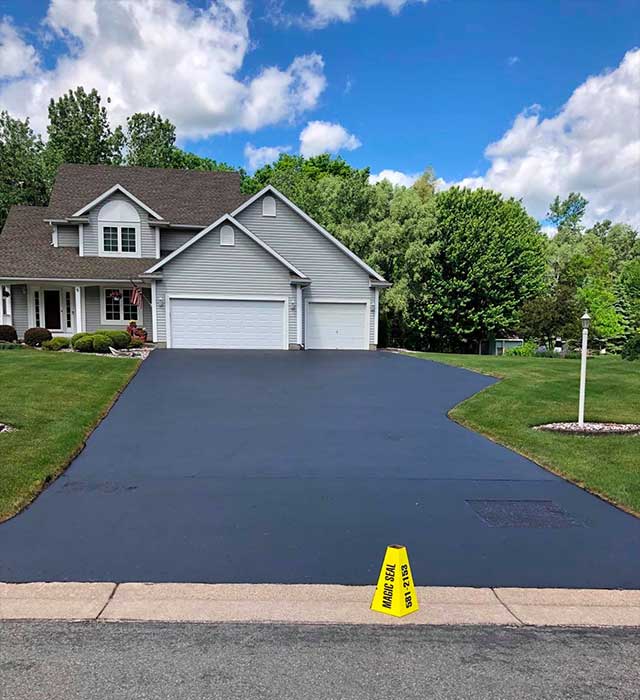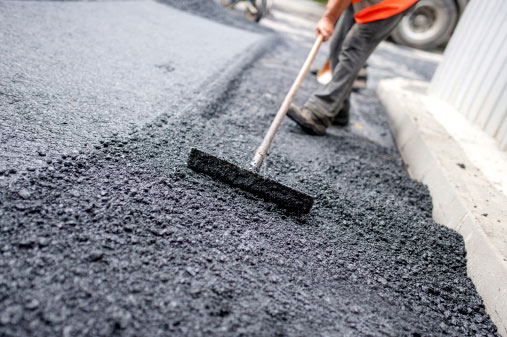Unlock the Keys of Asphalt Sealing: Maximizing Hot Mix Asphalt Durability
Unlock the Keys of Asphalt Sealing: Maximizing Hot Mix Asphalt Durability
Blog Article
Warm Mix Asphalt: A Lasting Remedy for Sidewalk
Warm Mix Asphalt (HMA) has arised as a leading lasting choice for pavement options, providing a myriad of innovative modern technologies and environmental advantages. As the demand for green building practices expands, discovering the nuances of HMA's sustainability can give useful insights right into the future of sidewalk options.
Environmental Advantages of Hot Mix Asphalt

Additionally, Warm Mix Asphalt helps to alleviate urban warmth island results. Its dark color soaks up sunlight, minimizing the quantity of warm mirrored back into the environment contrasted to lighter-colored pavements. This can reduce ambient temperature levels in urban locations, lowering the demand for a/c and inevitably decreasing power intake.
Additionally, Hot Mix Asphalt adds to enhanced stormwater monitoring. Its permeable nature allows water to reenergize and penetrate the pavement groundwater supplies, decreasing overflow and the danger of flooding. These ecological advantages make Warm Mix Asphalt a lasting selection for leading highways and roads.
Energy Efficiency in HMA Production
Is power performance an essential aspect in the production of Hot Mix Asphalt (HMA)? Power plays a considerable role in the manufacturing of HMA, affecting both cost and environmental sustainability. One vital element of energy performance in HMA manufacturing is the use of cozy mix asphalt (WMA) technologies.
Furthermore, innovations in plant innovations have actually caused more energy-efficient HMA manufacturing processes. Modern plants are created with features like recycled asphalt sidewalk (RAP) processing capacities, efficient burner systems, and enhanced insulation, all contributing to power savings. By optimizing power use in HMA production, the sector can decrease its carbon impact while maintaining high-quality sidewalk products. Energy performance is, for that reason, a crucial consideration in ensuring the sustainability of Hot Mix Asphalt manufacturing.
Recyclability of Warm Mix Asphalt
The recyclability of Warm Mix Asphalt (HMA) is a pivotal element of its sustainability and lasting ecological impact. HMA is among one of the most recycled products in the USA, with over 100 million loads of recovered asphalt sidewalk (RAP) being recycled each year in new pavement building. Reusing HMA uses numerous ecological benefits, such as lowering the demand for virgin materials, lowering energy consumption during production, and reducing the amount of waste sent to garbage dumps.
The procedure of reusing HMA includes milling the existing sidewalk, squashing it into smaller items, and blending it with new accumulation and asphalt binder to develop a recycled i was reading this mix. In general, the recyclability of HMA plays a significant role in advertising sustainable practices within the sidewalk market.

Long-Term Performance of HMA
Asphalt sidewalks show durability and strength over a prolonged period, reflecting the long-term performance of Hot Mix Asphalt (HMA) The durability of HMA can be attributed to its ability to hold up against hefty web traffic tons, extreme climate problems, and the impacts of aging. Research studies have shown that properly designed and effectively created HMA sidewalks can last for twenty years or more with regular upkeep. The trick to maximizing the long-term efficiency of HMA exists in utilizing premium materials, following ideal techniques in building, and executing effective upkeep methods. Appropriate drainage, regular assessments, and prompt repair services are necessary for protecting the structural stability of HMA sidewalks in time. Additionally, developments in HMA technology, such as making use of polymer-modified binders and warm mix asphalt, have actually additionally enhanced the sturdiness and durability of HMA sidewalks. By focusing on quality building and construction and upkeep practices, HMA remains to show itself as a cost-effective and lasting option for durable sidewalk framework.

HMA: Durability and Sustainability
Showing both resilience and sustainability, Warm Mix Asphalt (HMA) has come to be a cornerstone in the building of resilient sidewalk infrastructures - angled parking. HMA's longevity comes from its capacity to website here withstand heavy loads, extreme weather, and high traffic volumes, making it a trusted option for highways, highways, and airport paths. The make-up of HMA, which usually consists of aggregates, binder, and filler, plays a critical role in improving its long life and resistance to tear and wear
Additionally, HMA's sustainability hinges on its recyclability and energy-efficient production process. The capability to reuse reclaimed asphalt pavement (RAP) in new HMA combinations minimizes the need for virgin materials and lessens the ecological influence of pavement building and upkeep. In addition, the power efficiency of creating HMA depends on its reduced blending temperature levels compared to various other sidewalk materials, leading to decreased energy usage and greenhouse gas discharges.
Verdict
To conclude, hot mix asphalt (HMA) offers a sustainable remedy for sidewalk with its eco-friendly characteristics. HMA's recyclability, power efficiency in production, and lasting durability make it an environmentally friendly choice for roadway building. By preserving natural deposits, lowering waste, and decreasing greenhouse gas exhausts, HMA plays a critical duty in advertising sustainability in framework growth. Its ability to reduce urban warmth island impacts better underscores its significance in creating resilient and ecologically mindful pavement systems.
HMA is one of the most recycled products in the United States, with over 100 million lots of reclaimed asphalt sidewalk (RAP) being reused annually in brand-new pavement building and construction.The process of recycling HMA entails grating the existing sidewalk, crushing it right into smaller items, and mixing it with brand-new aggregate and asphalt binder to develop a recycled mix.Asphalt pavements show sturdiness and resilience over an extended period, showing the long-lasting performance of Warm Mix Asphalt (HMA) Additionally, developments in HMA technology, such as the use of polymer-modified binders and cozy mix asphalt, have additionally enhanced the toughness and longevity of HMA sidewalks. The capacity to reuse recovered additional hints asphalt sidewalk (RAP) in new HMA blends lowers the demand for virgin materials and decreases the environmental effect of sidewalk building and construction and maintenance.
Report this page